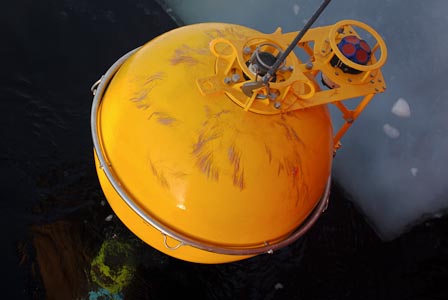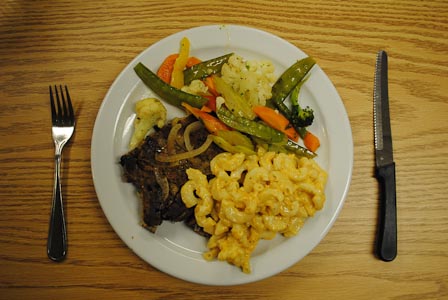Alex KainOctober 14, 2009Science. Between September 17 and October 15, 2009, the CCGS Louis S. St-Laurent traveled to 43 stations throughout the Beaufort Sea. At these stations, scientists performed a total of 53 rosette casts. Each cast collected 24 samples of water from varying depths. In total, 12,720 liters of ocean water were collected from depths ranging from 100 to 3,800 meters. To accomplish this feat, the rosette traveled a total of 237 kilometers up and down the height of the ocean. Scientists collected and bottled 1,123 samples of ocean water from Niskin bottles. Each bottle corresponded to a sample of ocean water taken from a specific region of the ocean and from a specific depth. These samples allowed scientists to perform 9,654 nutrient and chemical analyses, an average of 333 sample tests per day. Chemist Linda White ran nutrient analyses on over 1,000 samples of ocean water, providing a total of 3,600 data points that will be used for studies of ocean circulation, primary productivity, and ecology. 63 bongo net casts collected a total of 186 zooplankton samples from a range of 100 to 1,000 meters in depth. The samples will be used primarily for taxonomy and genetic analysis. The WHOI team deployed four and recovered two Ice-Tethered Profilers (ITPs). They also recovered and deployed three moorings. Each mooring and ITP will provide thousands of data points about Arctic ocean conditions over the next year. Scientists ran 55 XCTD casts to monitor temperature, salinity, and depth in the ocean up to 1,100 meters. 18 Turbomap casts provided data on water turbulence, mixing in the Upper Ocean, and heat flux. 23 PRR casts collected data on conductivity, temperature, depth, fluorescence, radiance, and turbidity.
Distance. The Louis traveled a total of 4,312 nautical miles (7,986 km, 4,962 mi) over a 29-day expedition period, averaging 149 nautical miles (276 km, 171 mi) per day. The ship reached its northernmost point at 79° 19.6' N, 151° 42.0' W, roughly 650 nautical miles (1,207 km, 750 mi) from the North Pole. Weather. The Louis encountered an enormous range of air temperatures while traveling throughout the Beaufort Sea. The warmest temperature occurred at 2 PM one day after leaving Kugluktuk on September 18, where the high reached 10.8 °C (51.4 °F). The coldest temperature experienced throughout the expedition occurred on October 7 at 8 PM, when the air plummeted to -18 °C (-0.4 °F). With a 10 knot (11.5 mph, 18.5 k/h) wind chill, the air felt like -30.0 °C (-22.0 °F). Hours later, at midnight on October 8, the temperature rose two degrees to -16.0 °C, but winds increased to 15 knots (17.2 mph, 27.8 k/h), making the air outside feel like a harsh -34 °C (-29.2 °F). These low temperatures occurred around 77° 7.2' N, 137° 52.8' W. Food. In 29 days, 86 scientists and crewmembers consumed 4,350 eggs, 1,450 lbs. (658 kg) of potatoes, and an average of 30 liters (7.9 gallons) of milk per day. In total, the cooks of the Louis prepared over 10,000 plates of food, offering three meals a day, every day.
Wildlife. Crewmembers and scientists aboard the Louis spotted one pod of whales, a dozen Arctic cod, two Snowy Owls, roughly ten Black-legged Kittiwakes, and three polar bears. Unfortunately, the WHOI dispatch writer was not present for the bear sighting. All text and photos property of Alex Kain. Last updated: October 7, 2019 | |||||||||||||||
Copyright ©2007 Woods Hole Oceanographic Institution, All Rights Reserved, Privacy Policy. | |||||||||||||||




